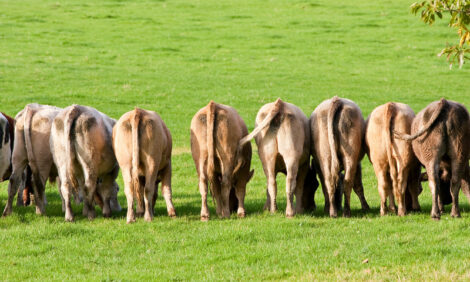



Questions About Latest US Corn Crop
US - In typical times, feedgrain producers and traders would have a good idea by now of how the previous year’s corn production turned out. But the past year has been anything but typical.“Given winter conditions since late December, combined with high soil moisture levels in the central, northern and northwestern Corn Belt, it is unlikely that much corn harvest progress will have occurred in time for the March 31 USDA stocks report,” said Dan O’Brien, Kansas State University agricultural economist. “Because of the unusually fierce winter weather that kept some farmers from harvesting, the final tally on the 2009/10 corn crop may not be certain until the 30 June grain stocks report. If that’s the case, it could contribute to greater volatility than usual in the US corn market this spring and summer.”
US Department of Agriculture data released 12 January estimated that US corn production in 2009 totaled a record-large 13.2 billion bushels - one per cent above the previous record of 13 billion bushels set, in 2007, and nine per cent higher than 2008’s harvest. Corn yields reached an all-time high in 2009 at 165.2 bushels per acre. Planted area was 86.5 million acres and the second highest since 1949, behind 2007´s 93.5 million acres.
Yet, there is uncertainty about the final size of the 2009 corn crop because USDA estimated the US corn harvest was 95 per cent complete as of 20 December, said Mr O’Brien, who is the K-State Research and Extension economist based in Colby, Kansas. And, if five per cent of the US crop is still unharvested, that would amount to approximately 3.98 million acres. In turn, with the year’s average US yield of 165.2 bushels per acre, this could amount to 657.5 million bushels of the 2009 crop, still unharvested in 2010.
Some of the questions that persist, he said, include a) the possible impact of low corn test weights on feedgrain usage; b) the quality deterioration of some corn supplies currently in storage; c) the potential for production losses on as much as 500 million to 650 million bushels of the 2009 crop corn that still is unharvested; and d) possible corn crop abandonment this spring, due to wet soils and the need for farmers to begin fieldwork in preparation for planting the 2010 corn crop.
In its February “World Agricultural Supply-Demand Estimates” report, USDA raised its projection of US corn usage for ethanol production by 100 million bushels, putting it at 4.3 billion bushels for the 2009/10 corn marketing year (1 September, 2009 to 31 August, 2010). Mr O’Brien explained that lower feedgrain input costs and supportive ethanol and distillers grains prices have helped to improve profitability in the US grain ethanol industry in 2009/10, thus leading to higher corn usage in ethanol production.
The 9 February report projected non-ethanol food, seed and industrial corn usage in 2009/10 will dip 5 million bushels to 1.265 billion, he said. Based on a slower-than-expected pace of 2009/10 US corn exports, USDA also lowered its 2009/10 corn export projection by 50 million bushels to a total 2.0 billion.
“Because of these changes in demand factors, corn’s projected 2009/10 US ending stocks fell by 45 million bushels to 1.179 billion,” Mr O’Brien said. “When considered together with a projected total use of 13.115 billion bushels in 2009/10, these ending stocks levels equal 13.1 per cent ending-stocks-to-use. That’s down from 13.5 per cent in the 12 January USDA report.”
USDA narrowed the projected range of US average corn prices for the 2009/10 marketing year by five cents on each end, putting the range at $3.45 to $3.95 per bushel,” the agricultural economist noted.
“If the March or June grain stocks report reduces the size of the 2009 US corn crop by 200, 400 or 600 million bushels -- due to late harvest, in-field crop losses or abandonment, or storage quality problems --then US corn ending stocks projections for the marketing year are likely to be reduced by similar amounts,” Mr O’Brien said.
With no reduction in total US corn usage, a 200 million bushel reduction in projected 2009 corn production would lower the 2009/10 US ending stocks figure from 1.719 billion to 1.519 billion bushels. It would lower ending-stocks-to-use projections to 11.6 per cent, he said.
Similarly, a 400 million bushel reduction would lower 2009/10 ending stocks to 1.319 billion bushels and a 10.0 percent stocks-to-use level. A 600 million bushel reduction would lower 2009/10 ending stocks to 1.119 billion bushels and a 8.5 per cent stocks-to-use level.
“In the event of such sizable reductions, it is likely that new crop CBOT (Chicago Board of Trade) December 2010 corn futures prices would be positively affected in the late spring to summer months,” Mr O’Brien said. “Sizable reductions could also mean that the US feedgrain market would be all that much more sensitive and volatile in response to either wet soil-induced planting delays in spring and/or weather threats to 2010’s feedgrain production in the summer.”
TheCattleSite News Desk


